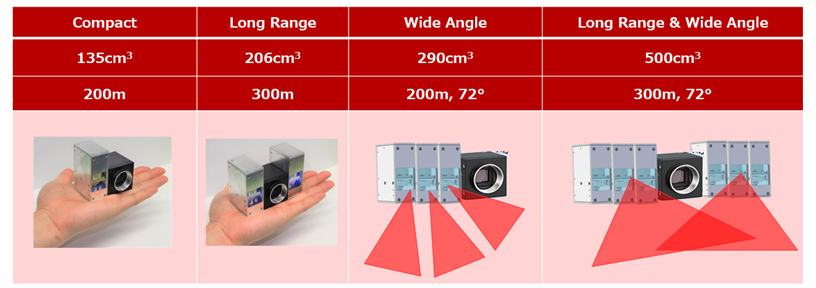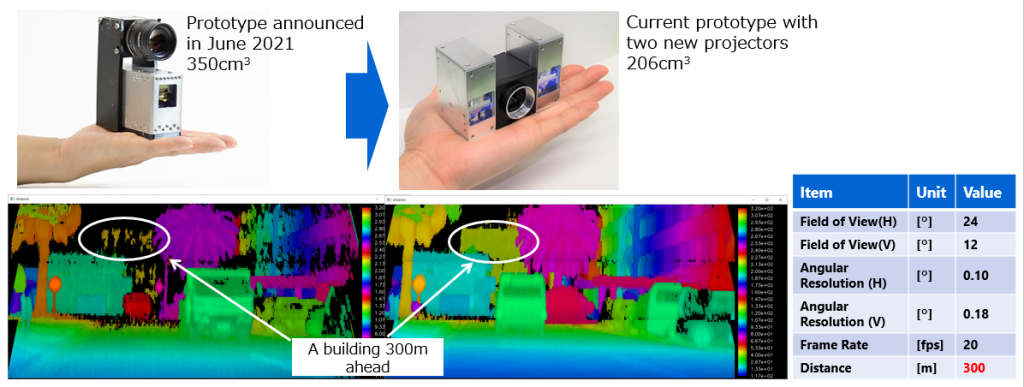In June 2021, Toshiba Corporation announced that they’d made a very small lidar - addressing some of the fundamental challenges in shrinking lidar. At that time, this was the smallest volume lidar available - and had a range of 200 meters.
 Thanks to a breakthrough in the laser projector unit configuration, Toshiba reports that they have now been able to create a unit one quarter the size of the 2021 lidar - small enough to fit in the palm of a hand.
Thanks to a breakthrough in the laser projector unit configuration, Toshiba reports that they have now been able to create a unit one quarter the size of the 2021 lidar - small enough to fit in the palm of a hand.
The new lidar uses two new projector units rather than a single source, creating a lidar that is only 206 cm3 in volume, and in addition has gained 100 meters of range, with a final resolution of 1200x84 pixels.
The research is part of Toshiba’s focus on infrastructure monitoring technology and developing sensors for autonomous applications, including autonomous vehicles. While late to join the lidar manufacturing and research market, Toshiba has been working with autonomous vehicle technology before the lidar development quietly started around 2015.
The need for smaller, but robust lidar was clear even as they began their research, but there’s a catch.
Shrinking a lidar unit for such applications, however, introduces a fundamental problem, says Akihide Sai, Senior Research Scientist at Toshiba’s Corporate Research & Development Center behind the new LiDAR.
“To extend the range of a laser emitted by a single projector, you have to increase its intensity. If you do that, you also have to increase its emission width, to avoid a beam that focuses on a small spot and is strong enough to impair eyesight. The problem is, a wider emission requires a larger projector.”
What Toshiba researchers discovered, however, is that when multiple, small projector units are combined, it can act as a single laser beam source. The resulting eye-safe beam increases the effective range without the need to switch to a larger laser.
By changing the configuration and number of the projector units, the unit can also be set up to handle longer or wider-angle applications.

LiDAR of various performances can be realized by combining the developed projectors.
In field tests, Toshiba confirmed that a LiDAR with two of the new projectors has a range of 300m, 1.5 times further than its previous prototype with a single projector. In very bright sunlight conditions, 100,000 lux, the two-projector LiDAR also showed much more detail in the scanned image than its predecessor.
Sai and his colleagues are building on current achievements for future advances.
“We are continuing research work that will advance our LiDAR technology, including solid-state LiDAR, toward boosting range and resolution, and making the LiDAR even smaller. We aim to commercialize LiDAR for autonomous driving and infrastructure monitoring in fiscal year 2023, and look forward to exploring new applications in robots, drones, and security devices.”






